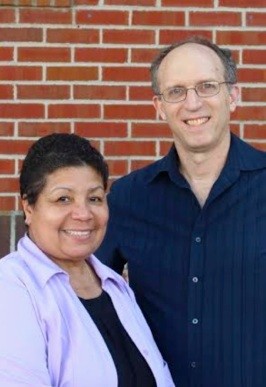Like any lesson ever, the Question Formulation Technique (QFT) doesn’t always go as perfectly as planned, but there’s always something you can learn from your facilitation of the QFT and students always benefit from having space and time to ask questions. I’ve certainly had those experiences where the Question Focus (QFocus) and the questions students asked about it didn’t segue into the next steps as I intended. It can be easy to adjust to a different QFocus by taking the lead from the questions that do get asked. For example, I once used a QFocus on Digital Citizenship: We need to learn how to be good digital citizens. It went nowhere. I went ahead and finished the lesson with an activity that wasn’t quite where I was going, and the disconnect, in my mind, was big.
So taking a cue from one of the questions they did produce, “Who cares if we are good digital citizens,” I re-did the QFT with the next class (thank goodness for 6 periods) with a new QFocus: “Grandma cares that you are a good digital citizen.” The results were markedly improved. My goal was to get them thinking about what they post and who ultimately sees it, and so my QFocus had to help set them in the right direction. Going back to my first class the next day and re-doing for them turned out even better because their ultimate question about “who cares” turned into great discussion about “The Grandma rule” (would you want your grandma to see what you just posted). It’s important to keep in mind that there are many QFocus statements I could have used to get to the same goal. Next time I’m going to plan differently, experiment ahead of time by testing it with individual students, and see which ones might be better.
The hardest part for me is to stay out of their process and let them work through it. Reminding students of the QFocus can be one helpful way to facilitate the process if their questions are falling too far afield of the next steps you have in mind. There have been other instances where at first students seemed to be getting off track and I wanted to intervene. But, eventually through some deep thinking, sitting with the QFocus, and working through their questions they eventually got to the exact questions I was hoping they would ask. And, they did it themselves.
For those questions that are silly or completely off topic, I’ve just ignored them and encouraged the group to continue asking questions about the QFocus. When whole class discussion brings up great questions, those silly ones fall by the wayside and group participants end up directing the conversation toward better questions on their own through prioritizing and the other steps of the QFT.
If, after a QFT, it doesn’t go where you want, you can re-do it with a different QFocus. Or you can tailor priority questions to ensure their convergent thinking and analyses help them evaluate the questions in a way that will lend nicely to the next steps in the lesson. Or you can make small adjustments to the lesson or unit so their questions better drive their learning. Even though the QFT is already a simple yet effective strategy, like other teaching strategies it gets easier and becomes more effective the more you use it.
My students continue to learn so much simply by asking their own questions, and regardless of whether the QFT went perfectly or not, I have new ideas and lessons learned that work to inform my future facilitation and planning.
 Connie Williams spent 28 years as a teacher librarian for Petaluma City Schools. She now works as an adjunct for Santa Rosa Junior College and an on-call librarian for Sonoma County Libraries. She recently published “Understanding Government Information: A Teaching Strategy Toolkit for Grades 7-12.”
Connie Williams spent 28 years as a teacher librarian for Petaluma City Schools. She now works as an adjunct for Santa Rosa Junior College and an on-call librarian for Sonoma County Libraries. She recently published “Understanding Government Information: A Teaching Strategy Toolkit for Grades 7-12.”




Speak Your Mind